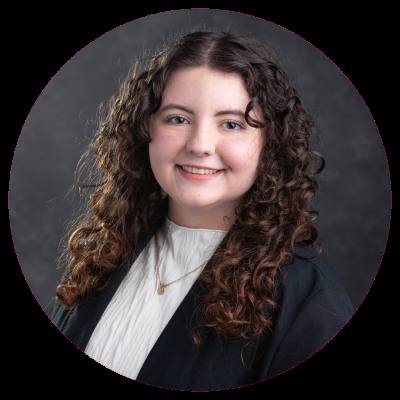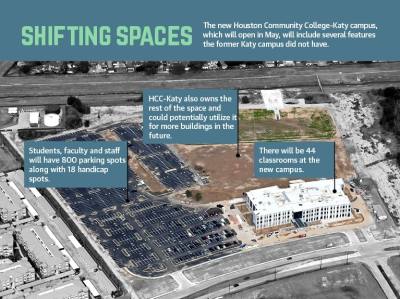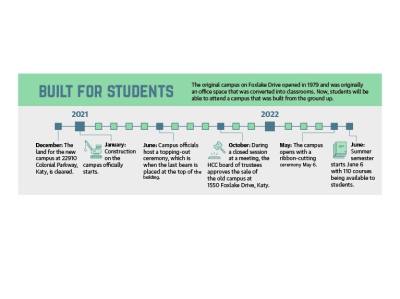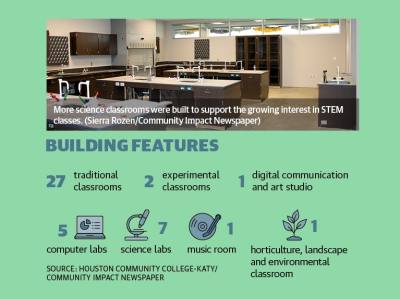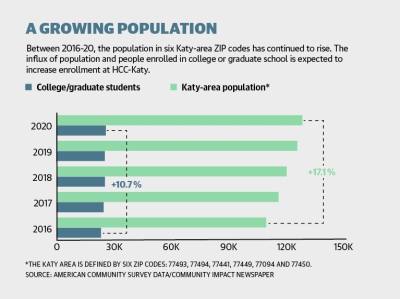A brand new proximity between Houston Community College-Katy and University of Houston-Victoria at Katy is expected to not only benefit the student community, but also provide an economic boost on the local workforce in Katy, local officials said.
“Starting in Katy, ending in Katy,” a slogan college officials introduced in 2017, means students who attend Katy ISD schools will be able to attend the new HCC-Katy campus and could eventually transition to the neighboring UH-V at Katy campus, said Zachary Hodges, president of the HCC Northwest system, which comprises four campuses, including Katy.
This initiative is the major driving force behind moving the campus to 22910 Colonial Parkway and selling the 1550 Foxlake Drive campus in October, Hodges said. The new campus has a ribbon cutting scheduled for May 6.
“[The Katy campus] served us well, and we were going to leave it, but at the same time, the opportunity has presented itself to partner with the University of Houston-Victoria at Katy to provide the first two years of the four-year program for them,” he said.
The May ribbon-cutting ceremony will be followed by the June 6 summer semester, which will offer 110 courses. An estimated 3,000 students will arrive on campus Aug. 24 for the fall 2022 semester.
College officials said the new campus was built to meet the needs of the Katy area’s growing population. Data released March 17 from the U.S. Census Bureau’s 2020 American Community Survey showed there has been an almost 11% increase between 2016-20 in the number of Katy-area residents attending college or graduate school in the six ZIP codes Community Impact Newspaper covers.
Partnerships with companies such as NASA and Amazon are working to employ HCC-Katy graduates, and the economic impact of the new campus is expected to be large, said Chuck Martinez, president of the Katy Area Economic Development Council. A December HCC presentation showed HCC alumni have added $2.6 billion in combined income to their local industries, something that will impact the Katy community.
“That’s our role in working with our community partners: to be able to attract industries that can hire these students,” he said. “Now it’s not only start in Katy, finish in Katy, but now live in Katy and work in Katy.”
A moving campus
Students who attend the new campus can transition after two years to attend classes at the nearby UH-V at Katy building at 22400 Grand Circle Blvd., which functions as an instructional site.
This proximity will allow students to stay in one place and reduce the commute from the old HCC campus to the UH-V at Katy campus. The UH-V at Katy campus not only hosts classes through UH-V, but also classes that are hosted by the UH main campus, according to the school’s website.
The new $26.3 million campus is funded by student tuition and the sale of the old campus, said Kathleen Anzivino, the college operations officer for HCC Northwest. Construction on the campus began in January 2021.
The three-story building will feature 44 instructional rooms, including science and computer labs, experimental classrooms, and a digital communication and art studio, Anzivino said.
“The old campus is more like a professional building. It does not deliver that ultimate student experience,” HCC-Katy Dean of Students Rima Adil said. “Now with this campus, ... they have really paid attention to every corner.”
The Foxlake campus had about 3,900 in-person students enrolled in the fall 2018 and 2019 semesters. Due to COVID-19, in-person enrollment dropped 64%, resulting in about 1,300 students enrolling in the fall 2020 and 2021 semesters, per college data.
College officials said they expect to have 3,000 students enrolled in person for the upcoming fall 2022 semester.
Economic impact
HCC officials said they saw a need for a larger building due to the growing science, technology, engineering and mathematics programs. The 2016-17 school year had around 29,000 declared STEM majors versus about 33,000 in 2020-21.
The number of declared STEM majors at all HCC campuses for the 2021-22 school year is almost 30,000, but these numbers are still being calculated, Anzivino said.
The original campus contained three classrooms dedicated to STEM—with one of them having to be shared between two subjects, said Susan Thompson, program director for engineering and STEM initiatives.
With the STEM program expansion, Thompson and Katy-area officials said they hope it will fill an engineering unemployment gap the Greater Houston area is experiencing. Many engineers are beginning to retire from their jobs, causing a need for more college graduates to enter the engineering field, Martinez said.
Within the six Katy-area ZIP codes that Community Impact Newspaper serves, out of 139,828 residents employed in 2020, 8,769 were employed in architecture and engineering occupations, per ACS data.
“[The HCC courses] meet a certain workforce gap, and they’re wanting to help fill that gap with these courses,” Martinez said.
The engineering program at HCC-Katy has a partnership with UH, called the Engineering Academy, that is offered at both the Katy Academic Building and at the HCC Felix Fraga campus, located in Houston. If accepted into the program, engineering students are immediately co-enrolled at UH and HCC when their freshman year begins, Thompson said. Core classes are taught through HCC, and engineering courses are taught at either the Katy Academic Building or the UH main campus.
Those who enroll in either construction engineering, systems engineering, or computer engineering and analytics will complete their degrees through the HCC-Katy and UH at Katy partnership for all four years.
Similarly, students who decide to major in either civil, electrical, computer, industrial or mechanical engineering will complete their first two years at either of the two partnership campuses and then complete the final two years at the UH main campus, Thompson said.
“HCC currently has over 2,000 declared engineering majors in our engineering program,” Thompson said. “It’ll be nice to be able to have a home base that’s connected to UH-V at Katy.”
Benefiting the students
Before students start applying for college, Katy ISD has been evolving its partnership with HCC-Katy to offer dual-credit classes for its students. Dual credit, a program offered in many high schools, allows students to take basic core classes at a local college that will grant them college credit if they pass the class. This helps give students a head start once they go to college and can also help save money along the way, Hodges said.
Sanée Bell, executive director of secondary teaching and learning at KISD, said via email that HCC and KISD provide students with opportunities to earn high school and college credit concurrently while students are enrolled in high school.
“Katy ISD currently offers a variety of dual-credit courses in the core areas of English, math, science and social studies as well as Spanish and other elective courses,” she said.
Katy High School, the most populated high school in the district, is about 3 miles away from the new HCC-Katy campus, making it easy for students to attend dual-credit classes in person. An estimated 1,200 KISD students are enrolled in dual credit, Hodges said.
HCC-Katy hired 11 admission advisers this year to stop by KISD high schools and assist students with the college admissions process. Adil said advisers can help with applications, financial aid, testing support and career exploration.
Once students get accepted to HCC-Katy, officials said they hope it will provide more opportunities than the average community college by securing local internships for students, getting them workforce experience and providing advanced technology.
“The campus is going to be really a new approach to where higher education is going,” Hodges said. “Learning occurs in the classroom, but it also occurs on the campus, and it also occurs in the community.”


